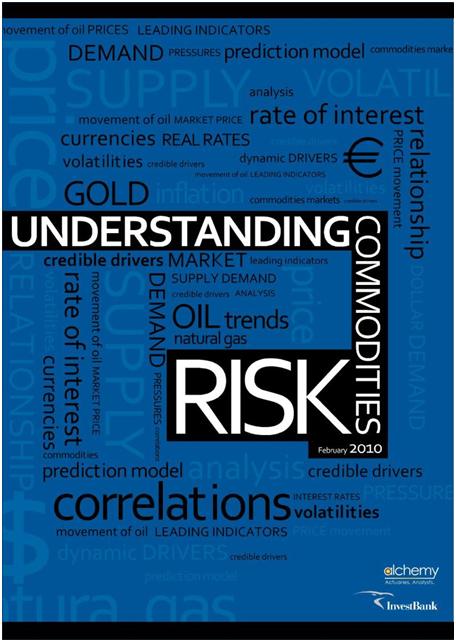Understanding Commodities Risk – out in print early March 2010

The principles are simple. Document the supply and demand of a resource, the psychology of its market and participant behaviour and you should have a handle on how prices move. Identify any leading indicators and your price prediction model is complete.
Interesting enough while commodities markets are older than time, at the user level price movement in this group is not as well understood as stocks and bonds. While each commodity is unique and to some extent interlinked with broader trends in oil, gold and currencies, analyst coverage is not as common or as deep as we would want. Till about two years ago this was acceptable since markets would spike and prices would shoot on account of supply and demand pressures and when an aggressive player was trapped in a short squeeze in a given market at a time. But all of this changed with the arrival of 2008, with 147 dollar oil, 1200 dollar gold, correlations and volatilities that could downshift before you could even spell the word sell.
In this edition of commodity risk, we have tried to answer five specific questions
- What are the relevant and credible drivers behind price movement of oil?
- What is the relationship between Australian dollar and gold?
- How have correlations and volatilities changed between 2008 and 2009?
- What is the real rate of interest in the Indo-Pakistan subcontinent? How closely are these two markets linked?
- How are price movements in oil related to other commodity groups? How does this analysis extent to Palm oil?
We start with a look at Oil, Gold, Natural Gas, Interest Rates and the Australian dollar. We look at the dynamics and the drivers behind these five groups and the one currency that is looked at as a leading indicator both for price movements and correlation. To this mix we add edible oil (Palm oil), inflation and interest rates in the region as well as examine the changing trend in correlations. Interest rates, real rates and inflation allowed us to examine inflation hedge effectiveness as well as document inflation adjusted returns.